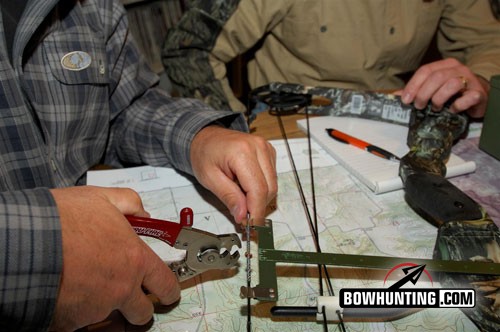LAST UPDATED: August 28th, 2024
Bow tuning is not some kind of black art practiced only by those who have gone through ritual hazing. To be honest, bow tuning is just the opposite. It is systematic, straightforward – something to which you can apply a recipe book approach. It is only mysterious when you don’t understand the basic steps involved. In this article, it is my goal to fill in the holes in your bow-tuning repertoire of knowledge and skill. I want to make this as easy as possible by taking you through the process a step at a time.
THE RIGHT START IS HALF THE BATTLE
I don’t tune as many bows each year as an archery shop, but I’ve been around enough of new models to know that getting started with the right settings makes this process a whole lot easier. I have seen the majority of bows I set up, tune right out of the box using these settings.
When setting your nocking point, place the bottom of your nock set (or the bottom of the top knot of your nocking loop) so that it is roughly 1/8 inch above the center of the cushion plunger hole.
Nock set position: First install your nocking system. You have several options here and I won’t get into them at this time – it is a good subject for a later article. However, you should position the nock locator (whichever style you choose) so that the top of the arrow’s nock will be roughly 1/8 to 1/4 inch above the center of the cushion plunger (rest attachment) hole. You need to use a simple T-square to assure that you are in the right place. If you are using a crimp on nock set, the bottom of the nock set should be at this position. If you are using a nocking loop, the bottom of the upper knot should be at this position. The same thing goes if you will be using a metal D-loop.
Vertical rest position: Most modern compounds will shoot best when the arrow crosses the center of the cushion plunger hole. You accomplish this by moving the rest support arms up or down until you achieve the desired results. Be sure you are holding the bow so that the cushion plunger hole is at eye-level when making this adjustment so you get as close to possible.






